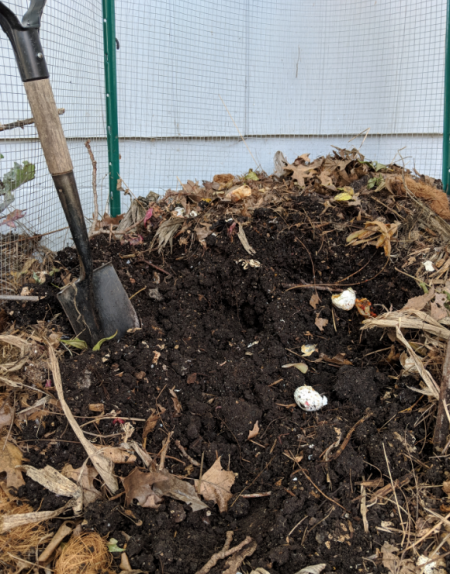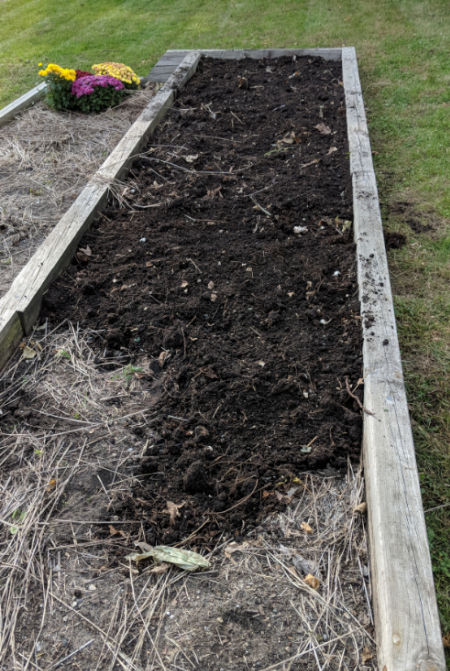Click below to listen to my 2 min. Garden Bite radio show: How to build a compost pile
Audio PlayerMy compost pile could use some help. Actually it needs to be completely revamped! But that’s another ‘Bite! Today it’s about the materials to use.

Again, I dip into my favorite magazine for inspiration, Northern Gardener.
- Your compost pile needs to be at least 3 ft. x 3 ft. x 3 ft. to provide enough heat to decompose the materials.
- You need to provide air circulation on the bottom, so pile twigs and brush on top of your soil base. The UofMN says:
- Build your compost pile in layers. Begin with eight to ten inches of leaves, grass or plant trimmings.
- Water it to the point of being moist, but not soggy.
- Add a green layer of about 3 to 4 inches. That’s kitchen scraps and/or plant waste.
- Next is a brown layer about 4 to 6 inches thick. Dried leaves are perfect.
- Then add an inch of soil or already composted material to introduce microbes to the pile.
- Repeat this layering process until the compost pile is finished.
The University of Minnesota Extension has a much more extensive article on Composting in Home Gardens. I highly recommend it.
From the article:
Different yard waste conditions affect how well you compost. The microorganisms responsible for decomposition need oxygen, water and nitrogen.
Particle size also affects efficiency. The smaller the plant pieces, the more rapidly they will break down. Use a shredder or power mower to chop up leaves and small twigs before adding them to the pile.

You’ll likely be working on your pile all through the season, then let it rest and decompose over winter. Your compost is finished when it’s cooled and shrunk to half its size. It should be brown and crumbly and smell earthy, not sour.

What NOT to compost:
- plants with disease or insect infestations
- plants treated with pesticides, including grass clippings
- invasive weeds
- weeds gone to seed
- pet poop
- meat or fish leftovers
- bones
- dairy products
- grease, fat or oils
- no sawdust from treated wood
- no whole eggs. ONLY the shells.
